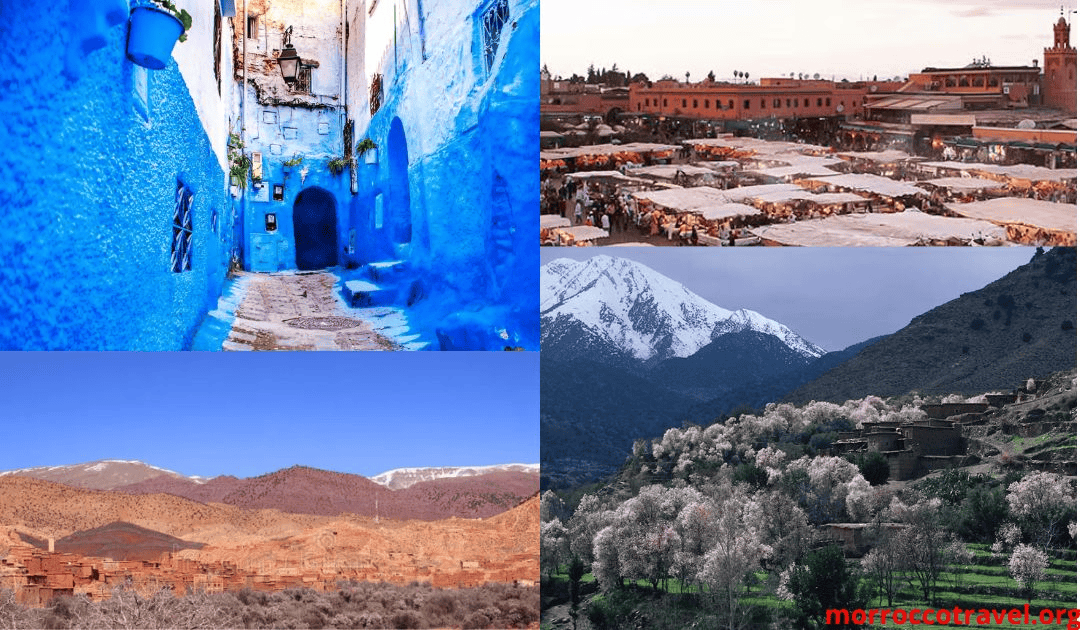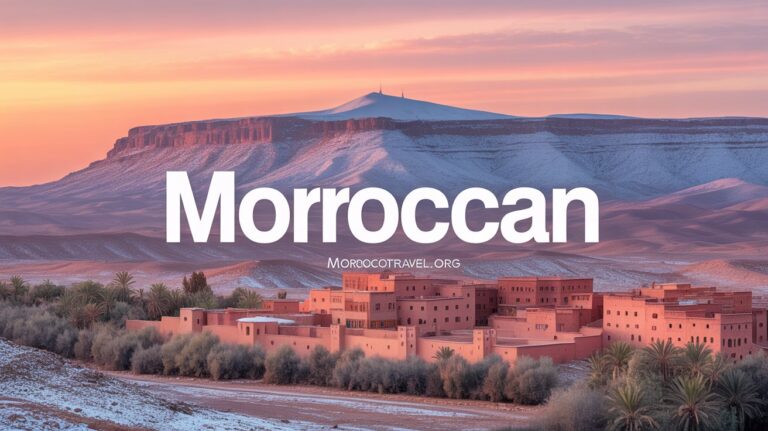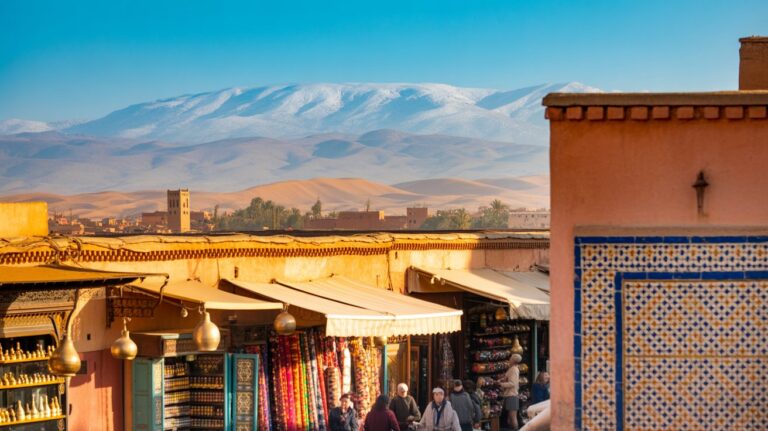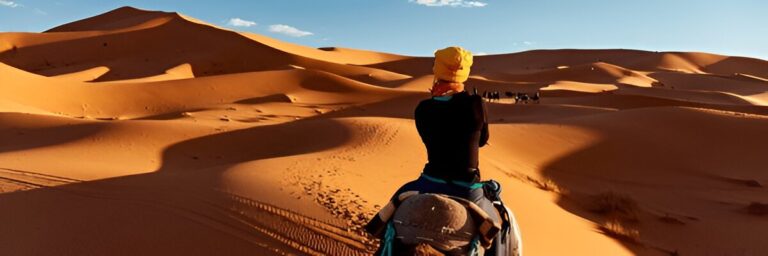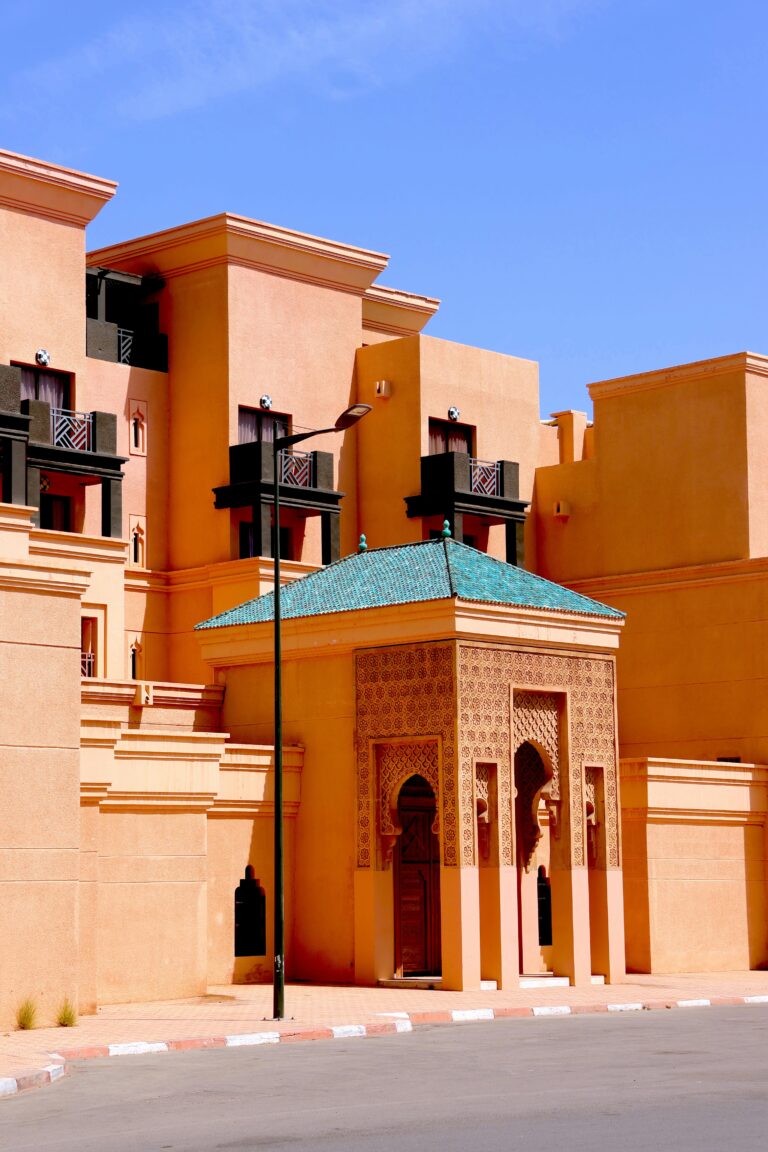Best Time to Visit Morocco 2026: Your Ultimate Seasonal Guide for an Unforgettable Adventure
Table of Contents
Imagine stepping into a world where ancient medinas whisper tales of sultans, golden dunes shift under starlit skies, and fragrant tagines simmer in bustling souks. Morocco isn’t just a destination—it’s an immersive sensory experience that beckons travelers with its rich tapestry of culture, history, and natural wonders. But here’s the secret to unlocking its full enchantment: timing your visit perfectly. The best time to visit Morocco isn’t a one-size-fits-all answer; it depends on whether you’re chasing blooming valleys in spring, sun-soaked beaches in summer, harvest festivals in autumn, or snowy mountain adventures in winter.
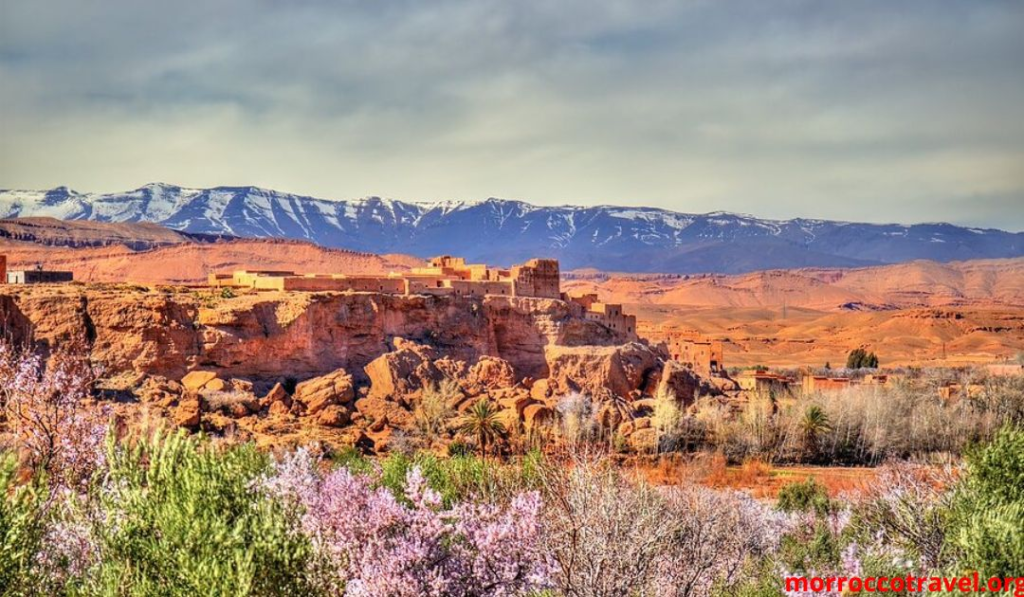
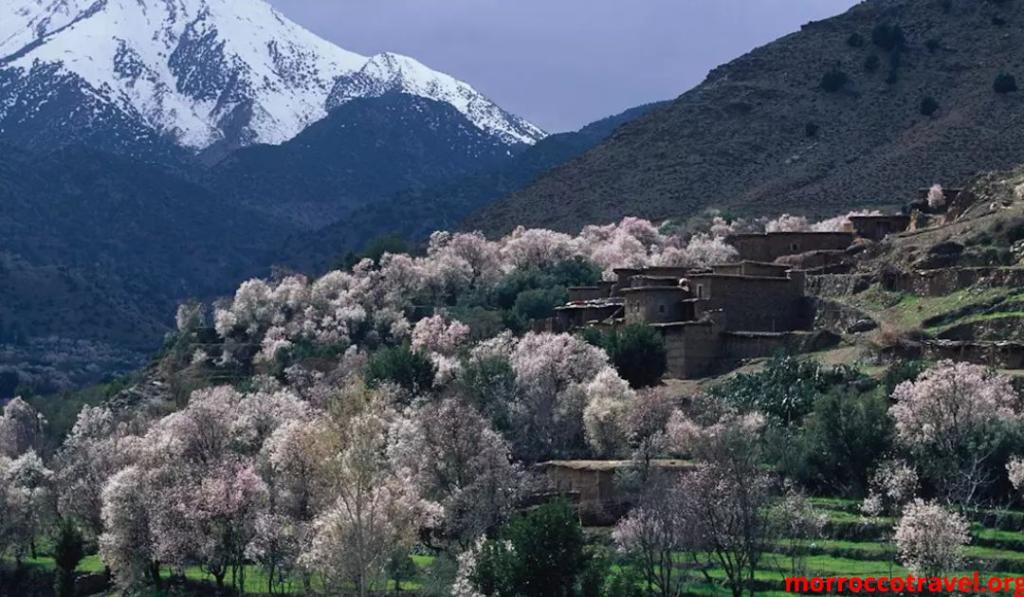
As a land straddling the Atlantic, Mediterranean, and Sahara, Morocco’s climate varies dramatically, creating opportunities for year-round travel. Whether you’re a solo backpacker seeking hidden gems, a family eager for cultural immersion, or a couple craving romantic riad escapes, this guide demystifies the seasons. We’ll explore weather patterns, must-see attractions, insider tips, and real traveler insights to help you craft an itinerary that aligns with your dreams. By the end, you’ll know exactly when to book those flights for a trip that’s not just good, but legendary. Let’s dive in and discover how Morocco’s seasons can transform your journey.
Decoding Morocco’s Climate: A Mosaic of Weather Wonders
Morocco’s allure lies in its climatic diversity, shaped by geography that spans from rugged mountains to endless deserts and shimmering coastlines. Understanding this is key to pinpointing the best time to visit Morocco for your style of travel.
The coastal north and west, including cities like Casablanca and Essaouira, enjoy a Mediterranean climate: mild, wet winters (10–20°C/50–68°F) with occasional showers, and warm, dry summers (25–35°C/77–95°F) tempered by ocean breezes. This makes them ideal escapes from European winters or North American summers.
Inland, Marrakech and Fes face continental influences—scorching summers often exceeding 40°C (104°F) with low humidity, and crisp winters around 5–15°C (41–59°F). Rainfall is sparse, mostly in winter, leading to dramatic seasonal shifts.
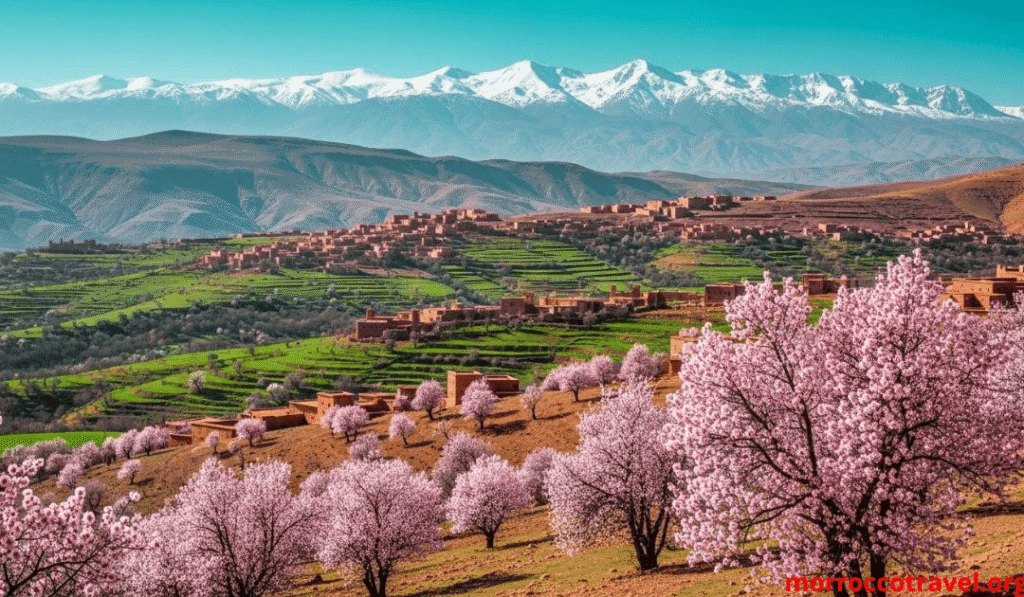
The Atlas Mountains, acting as a natural barrier, create alpine conditions: summers are mild (20–30°C/68–86°F) for hiking, while winters bring snow (below freezing at night) for Africa’s unique skiing spots like Oukaïmeden.
The Sahara Desert exemplifies extremes: summer days can hit 50°C (122°F) with sandstorms, but winters offer pleasant 20–25°C (68–77°F) days and chilly nights perfect for stargazing around campfires.
These variations mean Morocco caters to all preferences. For instance, if you’re into photography, the shifting light and colors across seasons provide endless inspiration. History buffs might prefer cooler months to explore medinas without fatigue. Adventure seekers can time hikes or desert treks to avoid hazards.
Climate also ties into Morocco’s cultural rhythm. Ramadan (varying dates) brings a contemplative pace during the day, exploding into festive evenings— a unique window for authentic immersion if you’re respectful of fasting customs.
Overall, Morocco’s weather isn’t a barrier; it’s an invitation to tailor your trip. With smart planning, any season becomes the best.
Spring in Morocco: A Symphony of Blooms and Mild Days (March to May)
If there’s a season that often claims the title of best time to visit Morocco, it’s spring. As winter’s chill retreats, temperatures rise gently to 18–28°C (64–82°F), with longer days and minimal rain creating ideal conditions for exploration. The air carries scents of blooming orange blossoms, and the landscape awakens in a riot of colors—green valleys, pink almond flowers, and purple irises dotting the countryside.
This period is paradise for nature lovers. The Ourika Valley near Marrakech transforms into a floral wonderland, with cascading waterfalls and Berber villages nestled amid cherry orchards. Hike the Toubkal trails in the High Atlas, where melting snow feeds vibrant meadows alive with butterflies and birdsong. Coastal areas like Tangier burst with wildflowers along cliffs, offering scenic drives with ocean views.
City life thrives too. In Fes, the medina’s narrow streets are comfortable for wandering, discovering hidden madrasas and tanneries without summer’s oppressive heat. Marrakech’s Jemaa el-Fna square comes alive with performers under blue skies, while Jardin Majorelle’s exotic plants glow in the soft light— a photographer’s dream.
Spring festivals add cultural sparkle: The Rose Festival in Kelaat M’Gouna (mid-May) celebrates the Damask rose harvest with parades, music, and rose-infused treats. In Tafraoute, almond blossom festivals (late February–early March) paint valleys pink, accompanied by local dances and markets.
For beachgoers, early spring warms the Atlantic enough for dips in Agadir, while the Sahara’s mild days (25–30°C/77–86°F) make camel treks enjoyable without scorching sun.
Pros of Spring:
- Blooming landscapes enhance hikes and photography.
- Comfortable temperatures for city sightseeing.
- Fewer extreme weather events.
Cons:
- Increasing crowds and prices toward May.
- Occasional late-winter rain in the north.
Recommended Itinerary (7–10 Days): Fly into Marrakech for souks and palaces. Day-trip to Ourika Valley for nature. Train to Fes for medina immersion. End in the Sahara for a blooming oasis stay. Budget $800–1500 per person, excluding flights.
Packing Tips: Light layers for variable days, comfortable hiking shoes, sunscreen (UV index high), modest clothing for sites, and a light rain jacket for early spring.
Traveler Insight: “Spring’s flowers turned my Atlas hike into a fairy tale—colors everywhere!” – Emily, from Canada.
Spring embodies Morocco’s renewal—fresh, vibrant, and full of promise, making it a top choice for balanced trips.
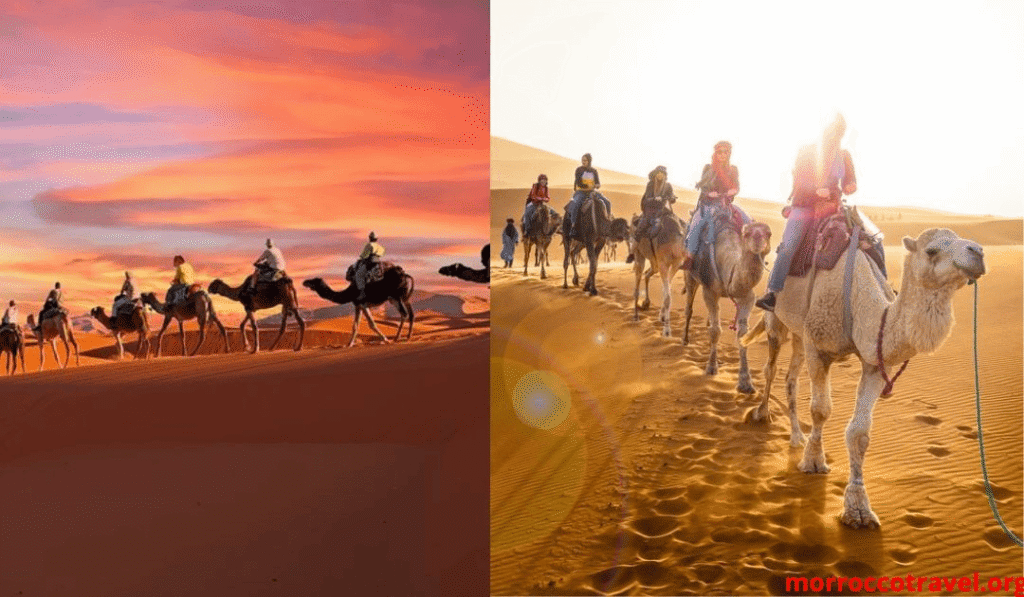
Summer in Morocco: Embracing the Heat with Coastal Charms and Mountain Escapes (June to August)
Summer in Morocco is a tale of contrasts: sweltering inland heat versus refreshing coastal havens. Temperatures climb to 35–45°C (95–113°F) in cities like Marrakech, with low humidity but intense sun demanding strategic planning. Yet, this season shines for those who adapt, offering unique festivals and uncrowded inland sites.
Coastal towns become summer stars. Essaouira’s trade winds keep days at 25–30°C (77–86°F), perfect for kite-surfing on Atlantic waves or strolling the ramparts. Agadir’s long beaches buzz with sunbathers, while Taghazout attracts surfers to its consistent breaks. Inland escapes to the Atlas provide cooler highs around 25°C (77°F), with shaded valleys like Imlil offering hikes to waterfalls and Berber tea houses.
Desert trips are challenging but rewarding for hardy adventurers—opt for glamping with pools in Merzouga, where evenings cool for dune dinners under stars.
Festivals pulse with energy: The Gnaoua World Music Festival in Essaouira (late June) fuses African rhythms with global artists in a beachside setting. Marrakech Popular Arts Festival (July) fills streets with folklore, music, and acrobats, turning the heat into a lively backdrop.
For cities, time activities for mornings/evenings: Shop Marrakech souks at dawn, visit palaces midday with AC breaks, or enjoy rooftop dinners as temperatures drop.
Pros of Summer:
- Vibrant coastal activities and water sports.
- Fewer tourists inland, better deals.
- Lively evening festivals and markets.
Cons:
- Extreme heat limits midday outings.
- Potential sandstorms in desert.
Recommended Itinerary (7–10 Days): Base in Essaouira for beaches and festival vibes. Day-trip to Marrakech for evenings. Venture to Atlas for a cool hike. Budget $700–1400 per person.
Packing Tips: Breathable cotton clothes, swimsuits, wide-brim hats, high-SPF sunscreen, electrolytes for hydration, and light scarves for sun protection.
Traveler Insight: “Summer in Taghazout meant epic surf and no crowds—worth the warmth!” – Alex, from Australia.
Summer tests resilience but rewards with Morocco’s sun-kissed soul and hidden tranquility.
Autumn in Morocco: Harvest Hues and Serene Exploration (September to November)
As summer fades, autumn emerges as another contender for the best time to visit Morocco. Temperatures settle at 20–30°C (68–86°F), with crisp air and golden light ideal for photography and outdoor pursuits. Rainfall increases slightly in November, but days remain mostly sunny.
Harvest season infuses autumn with flavor: Date palms in Sahara oases ripen, olive groves in Meknes yield fresh oil, and pomegranate festivals celebrate the fruit’s abundance. The landscape glows in warm tones—amber dunes, russet valleys, and turning leaves in the Rif Mountains.
Coastal areas like Tangier offer pleasant beach walks, while the Sahara’s comfortable days (25–30°C/77–86°F) make erg explorations delightful without summer’s blaze.
Cities feel refreshed: Fes medina’s alleys are navigable, with artisans at work in cooler conditions. Rabat’s gardens bloom one last time, and Casablanca’s Corniche promenade invites leisurely strolls.
Festivals add intellectual depth: Marrakech International Film Festival (November) screens global cinema amid the city’s cinematic backdrop. Tanja Jazz Festival in Tangier (September) brings smooth sounds to the strait.
For nature, autumn hiking in the Atlas or Rif hits peak form—clear vistas and mild paths.
Pros of Autumn:
- Harvest flavors elevate cuisine.
- Balanced weather for mixed activities.
- Decreasing crowds post-summer.
Cons:
- Early rain in north by November.
- Cooling nights require jackets.
Recommended Itinerary (7–10 Days): Start in Sahara for harvest oases. Train to Fes for medina and olives. End in Tangier for jazz and sea views. Budget $750–1300 per person.
Packing Tips: Medium layers, waterproof jacket for late autumn, comfortable boots for hikes, and reusable bags for market hauls.
Traveler Insight: “Autumn’s golden Sahara sunsets and fresh dates were pure bliss.” – Maria, from Spain.
Autumn’s mellow charm makes Morocco feel intimate and bountiful.
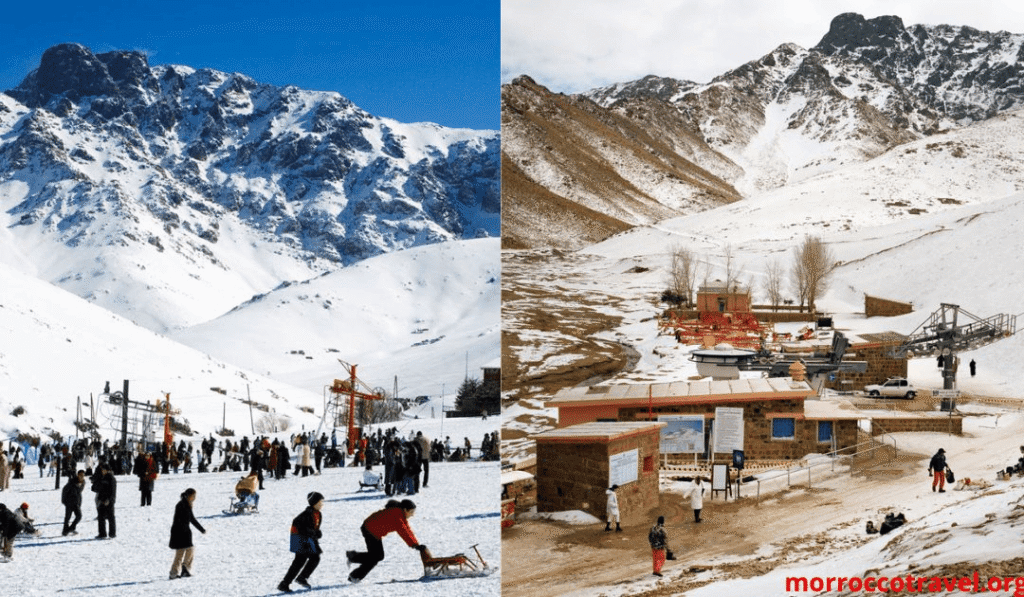
Winter in Morocco: Cozy Contrasts and Off-Season Magic (December to February)
Winter flips the script, offering the best time to visit Morocco for those seeking solitude and unique thrills. Coasts hover at 15–22°C (59–72°F) with occasional rain, inland at 10–18°C (50–64°F), mountains below freezing with snow, and Sahara days at 18–25°C (64–77°F) but nights chilly.
This season suits budget travelers—prices drop 20–30%, sites empty. Coastal winters mean sunny days in Agadir for golf or beach yoga, without summer hordes.
The Atlas transforms into Africa’s ski destination: Oukaïmeden offers slopes with Berber villages below. Snowshoe hikes reveal frozen waterfalls and cozy mountain lodges with wood-fired tagines.
Desert winters shine for stargazing—clear skies and mild days make Merzouga camel treks comfortable, with bonfires warming nights.
Cities take on a quiet glow: Marrakech’s souks feel personal, Fes’ medina invites slow wanders with steaming tea breaks. Rabat’s coastal paths offer bracing walks.
Festivals include Tan-Tan Moussem (December) for nomadic traditions and camel races.
Pros of Winter:
- Low costs and crowds.
- Unique snow activities.
- Comfortable desert exploration.
Cons:
- Cold nights/mountains.
- Shorter days, more rain north.
Recommended Itinerary (7–10 Days): Marrakech base for city warmth, Atlas ski day-trip, Sahara for winter stars. Budget $600–1200 per person.
Packing Tips: Warm coats, gloves for mountains, waterproof shoes, thermal layers, and hot water bottle for riads.
Traveler Insight: “Winter Atlas skiing followed by desert stars—Morocco’s contrasts amazed me.” – David, from USA.
Winter unveils Morocco’s serene, adventurous side.
Regional Spotlights: Matching Seasons to Destinations
Marrakech: The Red City’s Seasonal Rhythm
Spring/autumn: Ideal for souks and gardens—blooming Majorelle, lively Jemaa el-Fna.
Summer: Evenings for rooftop dinners; avoid midday.
Winter: Cozy riads, fewer tourists.
Fes: Medieval Magic Year-Round
Spring/autumn: Comfortable medina walks, tannery visits.
Summer: Early mornings for exploration.
Winter: Quiet alleys, warm harira soup.
Sahara Desert: Timeless Sands
October–February: Mild for treks, stargazing.
March–May/September–November: Pleasant but warming.
June–August: Avoid unless heat-tolerant.
Atlas Mountains: High-Altitude Adventures
March–May/September–November: Prime hiking.
December–February: Snow sports.
June–August: Cooler escapes.
Coastal Gems: Agadir and Essaouira
May–October: Beach bliss.
November–April: Mild for walks, surfing.
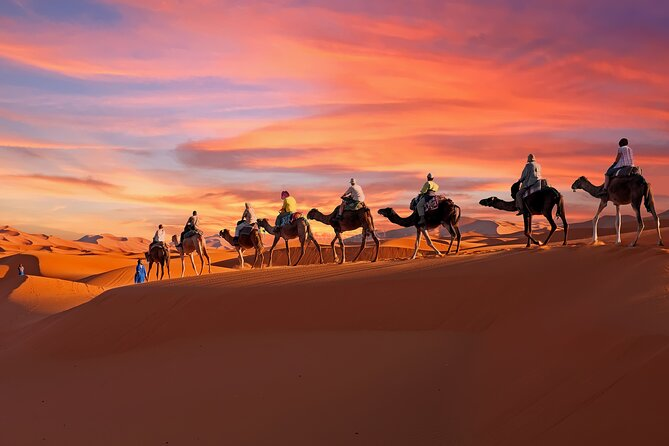
Practical Planning: Making Your Trip Seamless
Peak vs Off-Peak Dynamics
Peak (spring/autumn): Higher prices (hotels up 20–50%), book 3–6 months ahead.
Off-peak (summer/winter): Bargains, but check closures.
Ramadan and Holidays
Ramadan (March–April 2026 approx.): Daytime quiet, evenings festive—respect fasting.
Eid al-Fitr: Celebrations follow.
Health and Safety Considerations
- Vaccinations: Routine plus hepatitis A/B, typhoid.
- Water: Bottled always.
- Sun/Heat: Hydrate, cover up.
- Safety: Vigilant in crowds, licensed guides.
Packing Lists Tailored by Season
Spring/Autumn:
- Breathable layers
- Walking shoes
- Hat/sunglasses
- Light rain gear
Summer:
- Loose cotton clothes
- Swimsuit
- High SPF
- Electrolytes
Winter:
- Warm jacket
- Gloves/scarf
- Thermal base layers
- Waterproof boots
Budgeting Insights
Expect $50–150 daily per person:
- Accommodations: Riads $50–200/night
- Food: Street eats $5–10/meal
- Transport: Trains $10–50/route
- Attractions: $5–20/entry
Off-peak saves 20–40%.
Sustainable Travel Tips
- Support local artisans.
- Use reusable bottles.
- Choose eco-riads.
- Respect wildlife in deserts/mountains.
Traveler Experiences: Real Stories from the Road
“Spring in Marrakech felt alive—flowers, festivals, perfect weather!” – Lisa, Australia.
“Summer Essaouira’s winds made surfing epic, even in heat.” – Juan, Spain.
“Autumn Sahara harvest was magical—dates fresh from palms.” – Aisha, UK.
“Winter Atlas skiing surprised everyone—snow in Africa!” – Mark, Canada.
These voices underscore seasonal joys.
Frequently Asked Questions (FAQs)
What is the best time to visit Morocco for budget travelers?
Winter (December–February) or summer (June–August) offer lower prices and fewer crowds, though weather extremes require adaptation.
When should I avoid visiting Morocco?
Mid-summer inland if heat-sensitive; check Ramadan dates for adjusted paces.
Is spring really the best time to visit Morocco?
For most, yes—mild weather, blooming landscapes, and comfortable exploration.
What festivals align with the best time to visit Morocco?
Spring: Rose Festival; Summer: Gnaoua Music; Autumn: Film Festival; Winter: Moussem celebrations.
How does climate change affect the best time to visit Morocco?
Warmer trends extend shoulders seasons, but monitor for unusual heat or rain.
Can I visit the Sahara in winter?
Yes—mild days, magical nights, fewer tourists.
Conclusion: Craft Your Perfect Moroccan Moment
Morocco’s seasons each paint a unique portrait—from spring’s floral symphony to winter’s snowy serenity. The best time to visit Morocco ultimately reflects your passions: adventure in the mountains, relaxation on beaches, or cultural dives in medinas. With this guide, you’re equipped to choose wisely, pack smart, and immerse fully.
Don’t let planning overwhelm—start mapping your journey today for memories that last a lifetime. For tailored itineraries, hidden gems, and updates, head to morroccotravel.org. Safe travels—Morocco awaits!
Traveler Reviews & Experiences in Morocco
I like
The best blog

